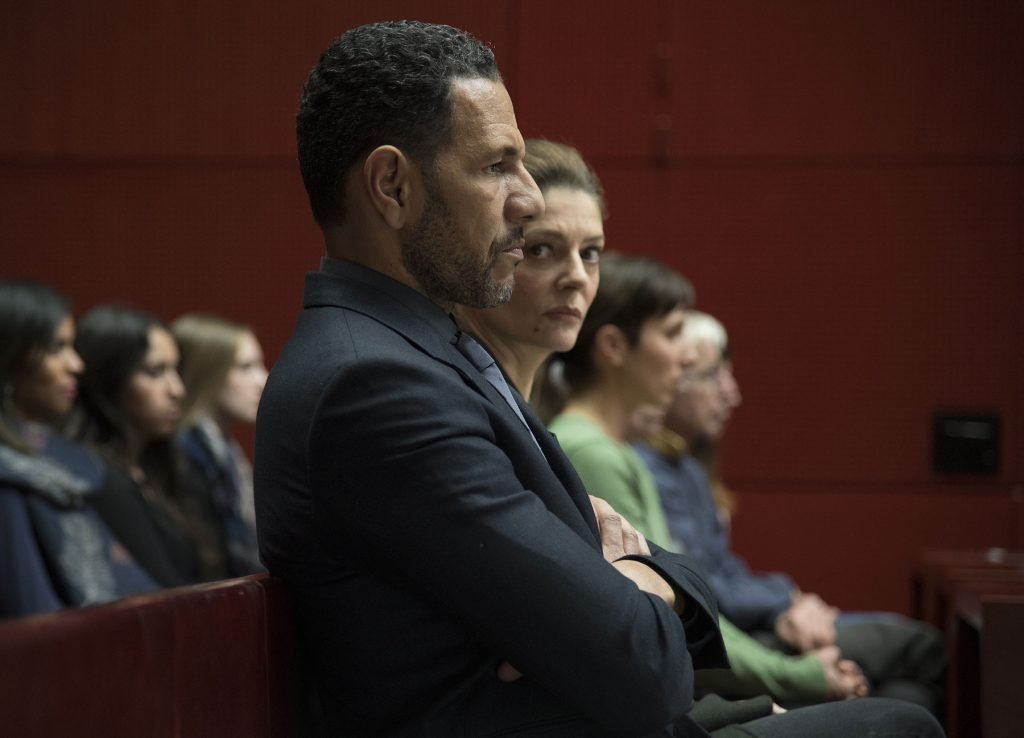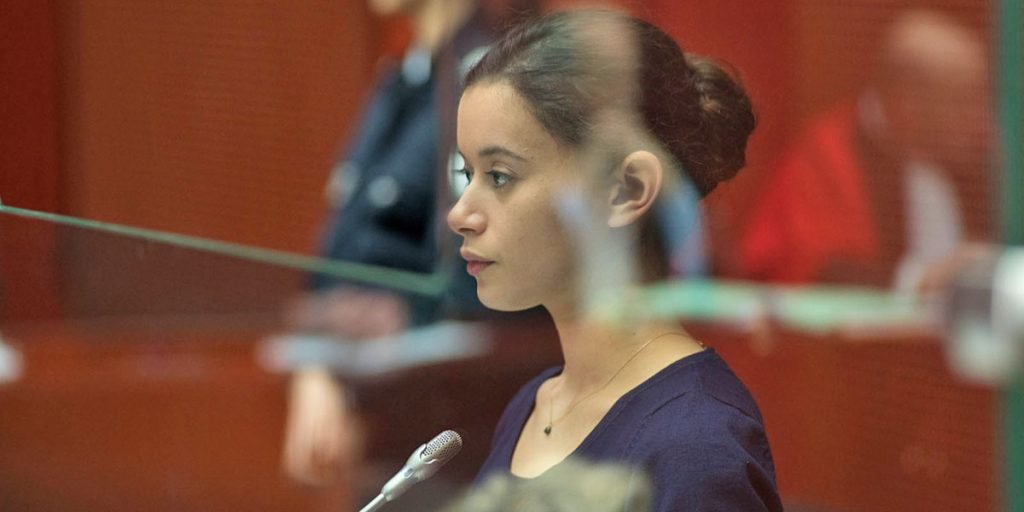The Girl with a Bracelet is a savvy legal drama the effectively transports the viewer into the shoes of an actual juror in a juvenile murder trial..
The Girl with a Bracelet is perhaps the single film I have seen that best captures the experience of the juror during a criminal trial. As someone who has spent his fair share of time around American courtrooms, I cannot recall a movie so committed to the gradual unfurling of evidence that helps to present a case to a jury. Each witness brings new bits of information to the table to help complete a picture of the circumstances surrounding an alleged crime – motive, sexual history, upbringing all help to create a cohesive mosaic effect in director Stephane Demoustier’s whip smart legal drama.
The film tells tale of a young girl, Lise (Melissa Guers), accused of murdering her best friend. The arrest that opens the film showcases a lovely moment of directorial restraint. Demoustier’s camera stays removed from the actual arrest; it pans slowly across the scene and follows – it as though a passerby were turning his head to watch the scene. The film then jumps nearly two years forward to the beginning of the accused’s trial. This restraint reverberates across the entire trial.
I could not help but find interest in the minutiae of how a French criminal proceeding works. There is no right to remain silent, no dramatic moment of announcing if the accused will testify, rather she is kept behind protective glass in the courtroom and asked to comment immediately after the testimony of each witness. As opposed to an American criminal trial which would merely see a prosecutor and a defense attorney question each witness, the French system sees the judge, the prosecutor, the defense attorney, and the attorney for the victim all have an opportunity to question each witness, and the accused about that witness’ testimony. The very nature of a French proceeding heightens the drama and the potential for tension and conflict. Five different voices have the opportunity to add next context to a witness’ testimony.

Demoustier sagely uses this system to allow for an elegant ebb and flow of the trial. A real trial feels like a soul-crushing grind – time simultaneously speeds up and slows down. There is a near unlimited amount of work to be done to prepare for each day, but each court appearance feels like a series of small victories and bitter defeats. The Girl with a Bracelet captures the more subtle effect a real trial has as opposed to the “gotcha!” moments one expects from too many episodes of Law and Order. One scene may see an apparent motive clearly established by one witness, only to see it undercut minutes later by an affection moment between victim and accused, caught on film just hours before the crime.
While some time is spent with the defendant and her family, the strain of a trial on loved ones is clearly not the director’s point of interest in this material. And that is for the best – we have countless dramas that address that tension, including the recent enjoyable Apple TV show Defending Jacob. Defending Jacob serves as a useful counterpart to The Girl with a Bracelet, as it highlights the unique nature of Demoustier’s story.
Despite a run time approaching 7 hours over 8 episodes and resoundingly similar subject matter, a student accused of murdering a classmate, Jacob dedicates less than an hour to the actual murder trial. Nearly all of The Girl with a Bracelet ’s brisk run time takes place in the courthouse. Demoustier smartly uses shortcuts to allow a viewer to fill in the other details. Lise’s mother’s commitment to her work at the expense of attending the trial fills in all the family tension we need – and all the tension a juror might see. Lise’s little brother’s light hearted quip about taking her room when she is sent to jail clues in at least one strong, loving family bond. Even the film’s title, a reference to the ankle monitoring bracelet Lise is forced to wear by the Court, emphasizes that she has both been marked as a pariah and physically constrained from doing as she pleases for the time since the murder.
A brief note on the film’s politics: left largely unsaid, but certainly present, is the fact that the accused, Lise, is not white. It is not surprising that the police would be more inclined to target and arrest a potential defendant of mixed race, which minimal investigation into other suspects. Demoustier is more overt in his criticism of unequal sexual mores in French society. The teen girl who has slept with a few men is treated as a slut; the teen boy who has behaved similarly sees no scorn. “Easy” is a word that only exists for women. The point is fair and correct, but Demoustier loses his restraint in the weeds of gender inequality leading to the only moments in the film which feel less than honest to the characters.
None of The Girl with a Bracelet’s success would be possible without excellent performers. The accused, played by newcomer Melissa Guers, has a surprisingly difficult role. The part requires Guers to internalize so much of the tension and strain of the trial without becoming robotic. Guers is up to the task – the simmers of anger beneath the surface at each perceived betrayal by a witness feels entirely real. All of the supporting players feel credible and effective. The French system allows for interesting points of confrontation: the prosecutor questions the father of the accused; the defense lawyer questions the mother of the victim. Demoustier’s script feels true to the motivations of each character in these scenes, their words do not suffer from the “Sorkin disease” which often sees characters speak more eloquently in courtrooms than they otherwise might in service of making the trial seem more grandiose.
The Girl with a Bracelet is now available to watch on digital and on demand.

